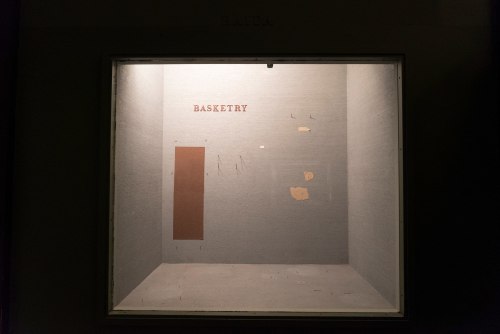
What the New Federal Regulations for Native American Ancestors and Sacred Objects Mean for Museums
By Karen K. Ho
February 21, 2024
Over the past several weeks, museums across the United States have been covering up and removing displays of Native American ancestors and cultural objects.
The American Museum of Natural History (AMNH) in New York closed two halls and covered seven other display cases that featured “severely outdated ” exhibits of Native American cultural items in late January. More than half a dozen other major museums recently removed or covered up Native American items on display, including the Denver Museum of Art, the Cleveland Museum of Art, the Field Museum in Chicago, the Peabody Museum of Archaeology and Ethnology at Harvard University, and the Metropolitan Museum of Art.
These actions are the most visible responses to major revisions to the 1990 Native American Graves Protection and Repatriation Act (NAGPRA), which went into effect in mid-January . The new regulations are designed to address loopholes, speed up returns, give institutions five years to inventory and prepare all ancestors and related funerary objects for repatriation, as well as grant more authority to tribes throughout the process.
Despite NAGPRA’s 1990 passage, institutions like the AMNH have continued to use considerable resources—including anthropology departments, storage facilities, government funding, and tax-deductible contributions—to collect, preserve, research, display, and expand collections of these items.
“There are hundreds of thousands of objects, thousands of collections, and thousands of private collectors,” Erin Thompson, a professor of art crime at John Jay College of Criminal Justice, recently told ARTnews regarding her research on the repatriation of such items, including at the AMNH. “It’s taken hundreds of years to form these collections. It’s not going to be quickly resolved.”
(On the advice of Indigenous experts, ARTnews has avoided referring to cultural objects, burial belongings, and Native bodies held by museums and other institutions that come from federally recognized American Indian tribes and Alaska Native entities as “artifacts,” “antiquities,” and/or “human remains,” despite the latter being commonly used.)
When President George H.W. Bush signed NAGPRA into law, he said it promised “the protection and return of Native American human remains, funerary objects, sacred objects, and objects of cultural patrimony.” But federal data shows that, more than three decades later, institutions continue to possess about half the 200,000 Native bodies they had initially reported to the Interior Department after the passing of NAGPRA.
In January 2023, ProPublica published a substantial investigation into which institutions held the most items under NAGPRA jurisdiction and the different methods they used to repeatedly thwart the repatriation process, including labeling such items “culturally unidentifiable.”
The new revisions now require museums by federal law to inventory their collections of Native ancestors and sacred objects within the next five years; get “free, prior, and informed” consent from lineal descendants, Indian tribes, or Native Hawaiian organizations before conducting research, accessing or exhibiting those items; as well as follow clear timelines for the repatriation of ancestors and burial belongings.
“Institutions don’t have ownership rights to Native bodies and cultural heritage unless they can prove right of possession,” Shannon O’Loughlin (Choctaw Nation of Oklahoma), attorney and chief executive of the Association on American Indian Affairs (AAIA), told ARTnews. “It forces the institution to bring tribes to the table.”
This includes eliminating the “culturally unidentifiable” label through the simple use of geography and tribal consultation to determine an item or ancestor’s cultural affiliation.
While the American Alliance of Museums expressed concerns about how the new regulations will be a burden on staff and resources, the AAIA found that institutions gained knowledge about their collections after consulting tribes in accordance with NAGPRA. “Now, they’re better able to provide public education that’s appropriate and factual, and it’s done in collaboration with those Native nations,” O’Loughlin said.
There have also been institutions that have complied with NAGPRA without additional staff or resources. O’Loughlin pointed to the AMNH and its president, Sean Decatur, as a “really good and present example” after three decades of noncompliance. “I was grateful to see that they had such a thoughtful response to the covering and closing of their Native exhibits. And he talked about how important it was to comply with the law,” O’Loughlin said, referencing Decatur’s January letter to museum staff.
To help with the costs of consultation, inventory development, and repatriation of physical items, the National Park Service awarded $3.4 million in grants last year to museums and Indian Tribes, including nearly $100,000 to the Rochester Museum and Science Center.
Museums that fail to comply with the new revisions can incur a base penaltyexceeding $8,000, with additional penalties compounding per day of noncompliance.
It’s also worth remembering the unpaid emotional and cultural labor involved on the other side of NAGPRA for Tribal officials and Native communities seeking the repatriation of ancestral bodies and cultural objects, some of which were treated with toxic pesticides and preservatives by institutions.
“There’s people doing work in our communities, for things that we’ve never, ever had to do,” artist Nicholas Galanin (Tlingít/Unangax̂) told ARTnews. “How do we rebury an ancestral remain, and bring it home?”
Galanin previously tackled the subject in his 2019 photo and video series Fair Warning: A Sacred Place, which depicts empty display cases from the Northwest Coast Hall at AMNH alongside audio recordings of auctioneers collecting final bids for Indigenous objects. If museums do repatriate a significant number of items formerly on public display, the pieces could offer a vision for what those cases would look like devoid of the things they previously held.
After decades of investing in collecting, maintaining, and preserving collections of Native ancestors and sacred objects, the legacy of the new regulations may reveal which museums and institutions genuinely want to develop long-term relationships with Indigenous communities.
“Will the museum still be invested in the community when the objects are gone?” Galanin said. “I’m curious about that.”